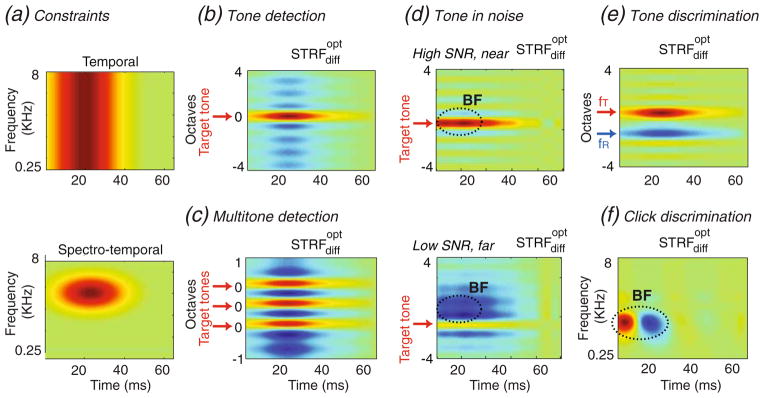Fig. 4.

(a) Two possible constrains on the STRF change. (top) A purely temporal constraint: change is more costly as the time-lag increases (bottom) A spectro-temporal constraint on the way an STRF can change: It is more costly as the time-lag increases and for frequencies farther from the best frequency of the neuron (b–f) Predictions of average STRF changes by the computational model for various auditory tasks. Predictions in cases (b–f) match closely the form of the observed STRF changes depicted in Figure 3(a–e)
